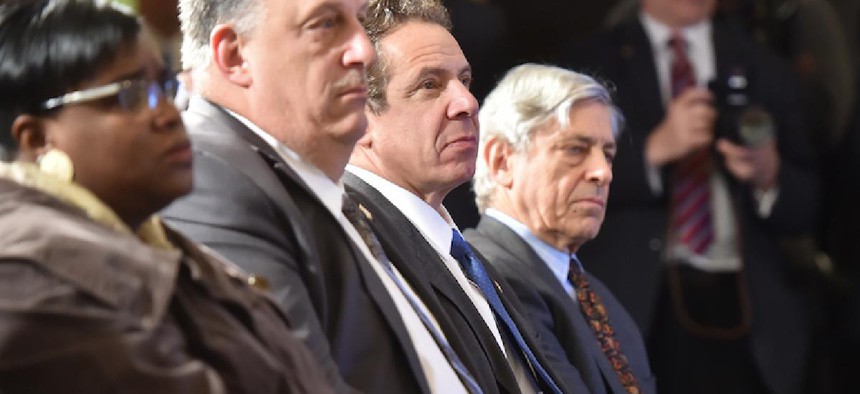Last Friday, an extremely rich tax subsidy for New York City housing developers went into suspended animation when the city’s real estate board and building trades unions failed to agree on labor standards for buildings that receive the subsidy. Gov. Andrew Cuomo and the state Legislature had renewed the program last June, contingent on a deal between the developers and unions.
Unsurprisingly, advocates for affordable housing have not been part of these negotiations. 421-a does include affordable housing provisions, but in recent years the tax break has produced only one affordable apartment for every $833,000 in taxes foregone. Last year, the state Legislature largely adopted reforms proposed by New York City Mayor Bill de Blasio, which modestly increased the amount of affordable housing required but dramatically inflated the value of the tax exemption offered – to the net benefit of developers.
It would be better to end 421-a and start from scratch. It is a poorly targeted, colossally expensive boondoggle that we are better off without, labor protections or no.
Before the state acted to renew 421-a last June, New York City was foregoing $1.1 billion in revenue each year for a program that led to no more than 1,275 apartments per year. By comparison, the vacancy decontrol provisions of the rent stabilization laws allow up to 20,000 apartments a year to be deregulated, and landlords voluntarily report about 6,000 deregulated apartments a year.
The key improvement in last year’s reforms was a deepening of income targets for some apartments from 60 percent of “area median income” to 40 percent, roughly equivalent to lowering rents from $1,200 to $800. The reforms also added requirements for apartments at a new target income level of 130 percent of area median income, resulting in apartments with rents around $2,500 per month.
But instead of making a big, inefficient program into an efficient one, last year’s legislation merely made it into an even bigger but still inefficient one. The new law’s key cost element increases the term of the exemption to 35 years from 10 to 25 years currently, depending on location, affordability options and the use of other subsidies. This roughly doubles the value of the tax exemption that would be extended to developers under the law.
A real reform of the 421-a system would have taken some of the excess benefits going to the real estate industry under the old rules and used them to create more apartments at lower rents. But as a recent report from the Furman Center showed, last year’s reforms did not diminish the net benefits to real estate at all – in fact they enhanced them, increasing the internal rate of return for 421-a investments under a wide variety of scenarios.
The best solution to the 421-a standoff is to end the program and then steer some of the increased tax revenue directly to well-designed housing affordability programs. And the best solution for affordable housing in New York City overall is, as always, to strengthen the rent stabilization and rent control laws.
Tom Waters is a housing policy analyst for the Community Service Society.


